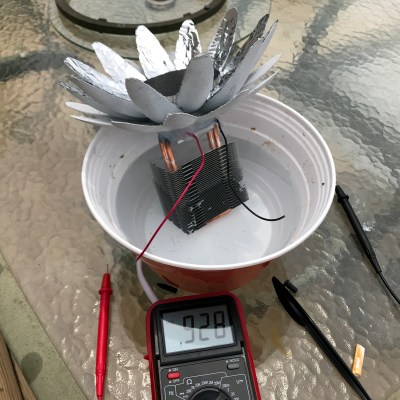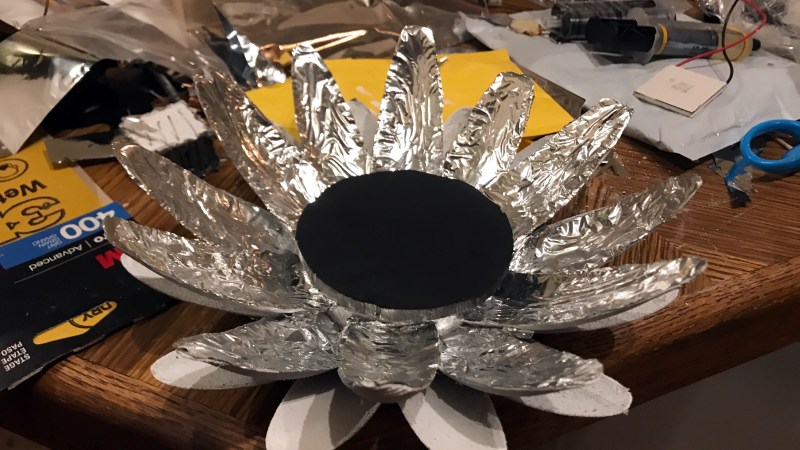
The Seebeck effect (part of the broader thermoelectric effect) is how a difference in temperature can be directly converted into a voltage, and it is the operating principle behind things like thermocouples and Peltier junctions. Harnessing this effect in an effort to wrangle a useful electrical current out of the environment has led to some interesting ideas, like the Lily Power Pods by [Josh Starnes].
What’s interesting about this particular design is that the artistic angle crosses over with functionality. Electrically speaking, the pods have one side of the thermoelectric generator heated by the sun while the other is cooled by being submerged in water, and the temperature differential creates a measurable voltage. [Josh] designed the pods to resemble flowers, with foil petals that help direct sunlight towards the blackened “hot side” of the thermoelectric generator while water takes care of the cool side.
Are foil petals the best way to gather and direct sunlight? They are not, but the idea is to have the pods look like something other than the floating hunks of machinery that they are. Since the pods must float in water and be exposed to sunlight, they will as a result have high visibility. [Josh] seems to feel that it’s important that they not be an eyesore. After all, a less efficient generator that doesn’t overstay its welcome still generates more power than one that has figuratively been handed its hat and told to move along.


















Often I’ve found we look at obtaining the most efficient procedure/device etc. but been efficient is not necessarily the “best” way to accomplish a task something a les efficient system as pointed out in the article can get more work done over all.
Chasing the long tail only makes sense after you’ve picked all the low hanging fruit.
A PV of the same foot print is no more/less of an eyesore than this is with the benefit of almost triple the energy converted.
I care a lot less a out open circuit voltage than I do about power available. Maybe use an MPPT IC meant for solar cells to find the max power point.
A simple clear dome over the collector end should improve efficiency without significantly increasing the eyesore factor. Using off the shelf PVs instead would increase it even more. TEGs are pretty inefficient. 10% compared to somewhere in the low 30%’s for modern PVs.
And as it’s on water, you can keeep the PV’s cooled, increasing the efficiency.
“What’s interesting about this particular design is that the artistic angle crosses over with functionality. Electrically speaking, the pods have one side of the thermoelectric generator heated by the sun while the other is cooled by being submerged in water, and the temperature differential creates a measurable voltage.”
PopSci had an issue where one side* was exposed to the sun, while a heat pipe ran to the much cooler bottom of the ocean. Greater temperature differential, plus less NIMBY.
*turbines, not TEG.
If a person took a look at febanocci sequence, you could increase efficiency easily and still look nice…after all thats what plants have been doing for millions of years….
http://www.maths.surrey.ac.uk/hosted-sites/R.Knott/Fibonacci/fibnat.html#section3